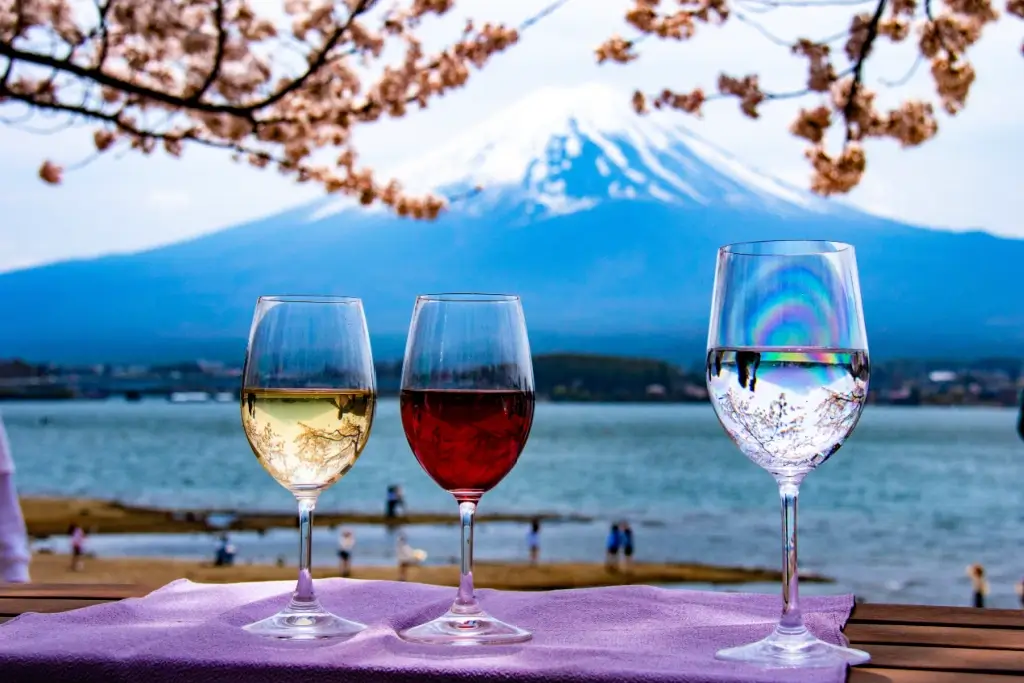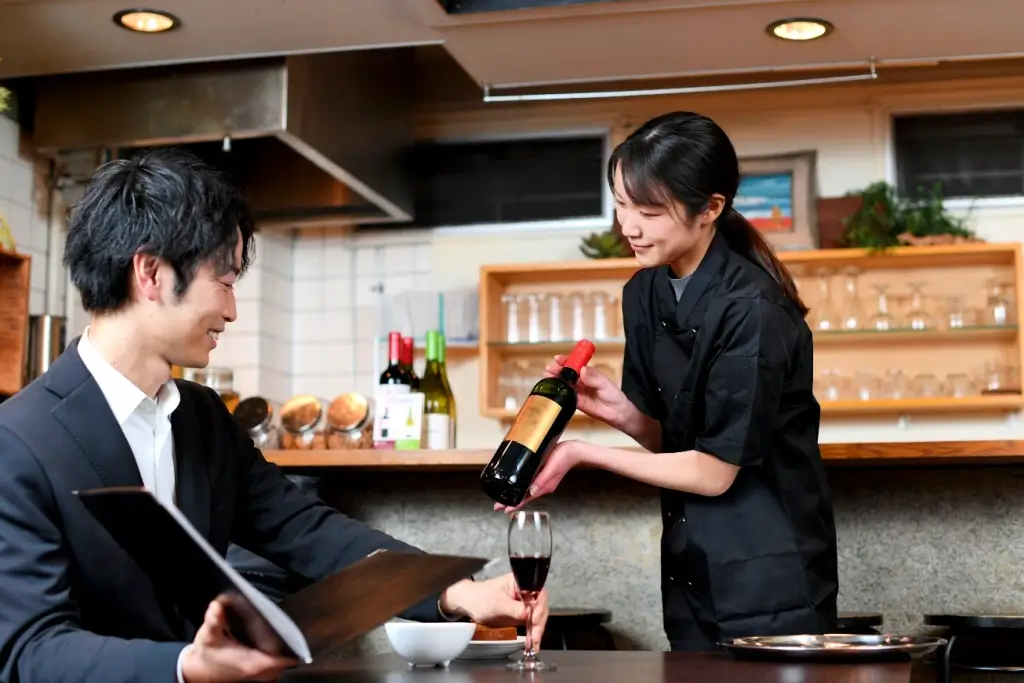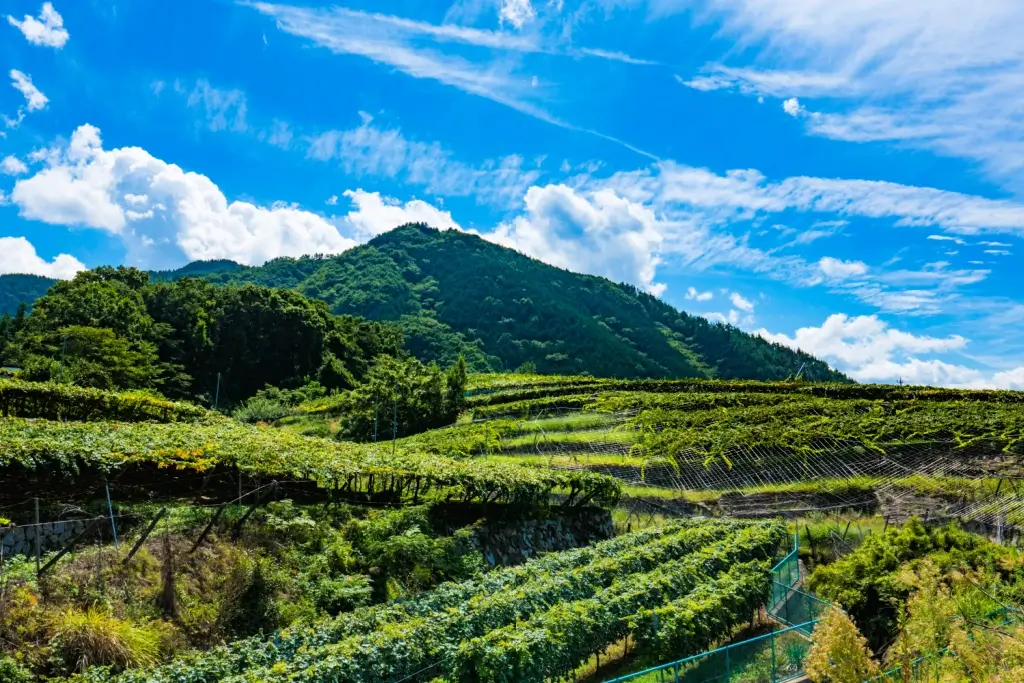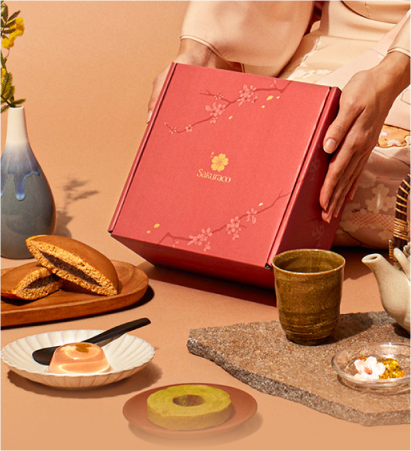yamanashi wine country
Yamanashi Wine Country: Japan’s Beautiful Vineyard Heartland
James Lau
Posted on November 11, 2025
Share:

Yamanashi Prefecture is known as Japan’s wine capital. Located west of Tokyo, it is home to most of Japan’s wineries and produces a large share of the country’s wine. The region’s mountains, clean water, and sunny weather create ideal conditions for grape growing. Visitors come to enjoy the wines, the views, and the relaxed atmosphere. Travelers can visit vineyards, enjoy tastings, and learn about the development of Japanese winemaking.
A Quick History and Overview of Japanese Wine
Japanese winemaking began in the late 1800s during the Meiji period. Early winemakers learned from Europe but quickly realized Japan’s unique climate required different methods. They experimented with local grape varieties and developed techniques to cope with Japan’s humid summers. This period laid the foundation for a new kind of wine that reflected Japanese conditions rather than copying European styles.

Technological advancements and regional cooperation also influenced the development of Japanese wine. Wineries improved fermentation, storage, and blending methods while supporting local growers. Yamanashi played a key role by producing consistent, high-quality grapes and training future winemakers. Today, Japanese wine is recognized for its clean taste and connection to the country’s agricultural traditions.
Yamanashi Wine Country
Yamanashi Prefecture produces about one-third of all Japanese wine. The main winemaking areas, Katsunuma, Fuefuki, and Kōfu, are surrounded by mountains that protect the vineyards and create significant temperature differences between day and night. These conditions help grapes develop rich flavors and balanced acidity. The soil is well-drained and contains volcanic minerals that add character to the wines.

The region’s wineries range from small family operations to major producers—many welcome visitors with tours, tastings, and seasonal events. Local tourism offices promote wine routes that enable guests to visit multiple vineyards in a single day. The landscape, often with Mount Fuji in the background, makes it a popular spot for wine lovers and photographers alike. Yamanashi’s accessibility from Tokyo also makes it an easy weekend destination.
What Makes It Different from Other Wine Regions in Japan
Yamanashi stands out from other Japanese wine regions for several reasons. It is the birthplace of the Koshu grape, a light-skinned variety that has been grown in Japan for centuries. Koshu wines are renowned for their clean, crisp taste and low alcohol content, making them an ideal pairing with Japanese cuisine. The region also holds Japan’s first official “Geographical Indication” status, which ensures that wines labeled “Yamanashi” meet strict production standards.

While places like Nagano and Hokkaido are relatively new to wine production, Yamanashi has been producing wine for over 140 years. Many of its wineries have multi-generational experience, blending modern methods with traditional practices. The area’s established reputation also supports a robust tourism industry centered on wine. This long-term commitment to quality sets Yamanashi apart from other regions in Japan.
Are you looking for great Japanese snacks that might pair well with wine? Check out Sakuraco! Sakuraco delivers traditional Japanese snacks, sweets, teas, and more from local Japanese makers right to your door!
Wine Tourism: Types of Wine in Yamanashi and Food Pairings
Yamanashi produces a wide variety of wines, but its signature is the Koshu white wine. This wine is light, dry, and often slightly citrusy, pairing well with sushi, sashimi, and grilled fish. The region also makes Muscat Bailey A, a red wine with soft tannins and berry notes that pairs nicely with meat dishes or Japanese curry. Sparkling and rosé wines are becoming increasingly common, demonstrating the region’s winemakers’ flexibility.

Food pairing is an essential part of the Yamanashi wine experience. Local dishes, such as hōtō noodle soup, roasted chicken, and mountain vegetables, pair well with the area’s wines. Some wineries feature on-site restaurants where guests can enjoy seasonal meals carefully crafted to complement their wines. For many visitors, it’s a chance to taste how local ingredients and wine come together naturally.
Famous Wineries and Wines of Yamanashi
Several well-known wineries help define Yamanashi’s reputation. Château Mercian is one of the oldest and largest, producing both Koshu and Bordeaux-style wines. Grace Wine is renowned for its elegant Koshu wines and its commitment to sustainable farming. Marufuji Winery and Sadoya Winery are long-established family-owned businesses renowned for their small-batch production and creative blends.

These wineries also play a significant role in the local tourism industry. They offer guided tastings, vineyard walks, and lessons about grape varieties and soil types. Some allow visitors to try wines that are not sold outside the region. Others run museums and heritage displays showing how Japanese wine has evolved over the years. Together, these producers show how Yamanashi balances tradition with innovation in winemaking.
Why You Should Try Yamanashi Wine
Trying Yamanashi wine is one of the best ways to experience Japanese craftsmanship. Each wine reflects the careful balance between nature and human skill. The clean, refreshing flavors pair well with both Japanese and Western dishes, making them easy to enjoy anywhere. Koshu wines are light enough for seafood yet flavorful enough for richer meals. Drinking Yamanashi wine connects people to Japan’s agricultural and cultural heritage.

Yamanashi wines also represent a different approach to winemaking. Their moderate alcohol levels and balanced taste make them ideal for casual drinking or formal meals. Choosing these wines supports local producers who maintain sustainable farming and traditional skills.
For visitors, buying or tasting Yamanashi wine is a simple way to take home a piece of Japanese culture. It’s a memorable experience that goes beyond the glass. Have you ever been to Yamanashi Wine Country? Have you ever tried the wine from Yamanashi? Let us know in the comments below!
Cited Sources
- JNTO. “Enjoy all the magic of Yamanashi, with Japanese wine“.
- Greater Tokyo. “Yamanashi Wine Country“.
- Winery Tours Japan. “Exploring Yamanashi: A Guide to Japan’s Premier Wine Region“.

Discover authentic flavors with Sakuraco
Get Sakuraco 

Discover authentic flavors with Sakuraco
Get Sakuraco 
Related Articles

Year of the Horse: A Ride Through Japan’s Past!
The lunar zodiac cycles have been an integral part of Japanese society for hundreds of years. Each animal in this 12-year loop has its own unique energy that is woven into festivals, fortunes, and daily decisions. The coming new year will mark the start of The Year of the Horse. And, as we charge into 2026, the horse (uma) will be the animal on everyone’s minds.

Japanese Calendar: The Ultimate Guide to Lucky and Unluck Days
Before modern technology, people were often at the mercy of fate and had to rely on any other means they could find to make everyday decisions. Rokuyo is one such trusted resource.

Japanese Paper: The Secret Behind the Art of Karakami
Paper has always played a significant role in Japanese culture. It is the foundation of many of the country’s art forms and plays a vital role in numerous customs. But karakami stands out among Japanese paper types as an irreplaceable part of many traditional Japanese art forms and ceremonies. It adds its elegance to all manner of aesthetics, in crafts, ceremonies, writings, and even interior design.

Fujiyoshida and More: Hidden Wonders of Japan’s Winter
Japan is an excellent destination that shines in all four seasons—spring, summer, autumn, and winter. Each season brings its own unique atmosphere and scenery. Even during the coldest and harshest time of the year, the country’s natural beauty and cultural activities always leave a lasting impression on visitors.



